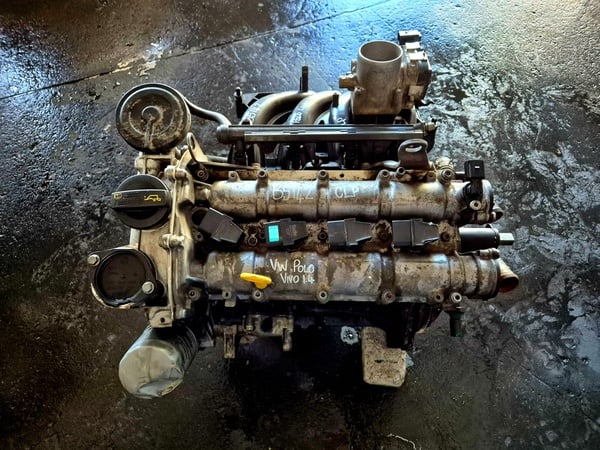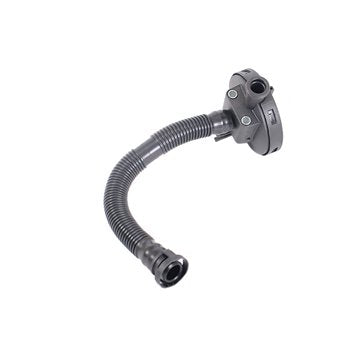Cut down maintenance costs with a well-built clp engine.
Cut down maintenance costs with a well-built clp engine.
Blog Article
Exactly How a Clp Engine Can Improve Efficiency in Numerous Industries
The introduction of CLP engines marks a significant change in operational performance throughout different sectors, driven by their capacity to enhance fuel intake and lessen downtime. Industries such as manufacturing and logistics stand to gain substantially from their robust design and consistent power outcome, which promise to streamline procedures and improve efficiency. As companies progressively focus on sustainability along with performance, the function of CLP engines ends up being much more essential. What stays to be seen is how these innovations will form the future landscape of industrial procedures and their effect on wider economic patterns (clp engine).
Introduction of CLP Engines
CLP engines, or Constant Liquid Propellant engines, represent a substantial innovation in propulsion modern technology, especially for space applications. These engines utilize a continual feed system that permits for the sustained expulsion of propellant, bring about enhanced efficiency and efficiency compared to traditional strong or hybrid propulsion systems. By keeping a continuous flow of fluid propellant, CLP engines can accomplish much more accurate drive control, which is critical for steering spacecraft in different mission scenarios.
The design of CLP engines incorporates advanced products and innovative gas management systems. clp engine. This causes lowered weight and increased dependability, vital factors for long-duration room objectives. The continual procedure minimizes the risk of combustion instability, a common obstacle in standard rocket engines.

Advantages in Manufacturing
The production of Constant Fluid Propellant (CLP) engines presents several notable advantages that enhance both effectiveness and cost-effectiveness. One of the key benefits is the structured manufacturing procedure, which reduces the intricacy linked with traditional propulsion systems. By using liquid propellant, makers can achieve better accuracy in engine performance, resulting in optimized power result and lowered waste.
Additionally, CLP engines help with a greater level of modularity, enabling for easier assimilation right into different manufacturing lines. This versatility can considerably lower preparations and enhance general operational flexibility. Making use of CLP technology likewise tends to reduce the requirement for comprehensive upkeep as a result of less relocating parts, which equates right into reduced downtime and functional expenses.

Applications in Logistics
Leveraging Continuous Fluid Propellant (CLP) engines in logistics supplies significant benefits in functional performance and read this post here integrity. These engines provide a durable option for numerous transportation demands, making it possible for the smooth activity of items across large ranges. The fundamental layout of CLP engines enables consistent power outcome, which converts right into smoother and a lot more predictable transport timetables.
Among the essential applications of CLP engines in logistics remains in sturdy products transportation, where they can drive both ground and aerial vehicles. Their capacity to maintain high performance under varying lots problems makes certain that delivery timelines are met, therefore boosting customer satisfaction. Additionally, CLP engines can be incorporated right into automated logistics systems, helping with real-time monitoring and maximizing course planning.
Moreover, the toughness of CLP engines minimizes upkeep downtime, allowing logistics firms to maximize their operational abilities. This is particularly valuable in warehousing procedures, where effectiveness in managing and moving goods is important. As logistics remains to develop, the integration of CLP engines stands for a forward-thinking strategy that not just boosts efficiency but additionally supports the market's expanding demands for integrity and speed.
Influence on Energy Performance
Just How do Continuous Liquid Propellant (CLP) engines boost power effectiveness in transport? CLP engines make use of a regular flow of fluid fuel, optimizing burning procedures and maintaining a secure drive result. This design reduces energy losses connected with traditional burning engines, where gas shipment can differ and bring about inefficiencies.
The continual operation of CLP engines permits an extra efficient thermal cycle, leading to higher particular impulse contrasted to conventional engines. clp engine. This converts to minimized fuel intake for the same amount of job done, substantially decreasing functional costs across different transportation fields, consisting of aviation and maritime markets
In addition, the capability of CLP engines to preserve optimal performance under differing lots conditions decreases the demand for regular velocity and slowdown, even more boosting fuel performance. Improved energy efficiency not just adds to set you back savings however additionally results in lower greenhouse gas exhausts, lining up with global more helpful hints sustainability objectives.
Future Trends and Innovations
Emerging developments in Continual Fluid Propellant (CLP) engine modern technology promise to revolutionize the landscape of transportation effectiveness and sustainability. As sectors pivot towards greener choices, CLP engines stand at the forefront, integrating cutting-edge products and design methods that boost efficiency while decreasing environmental impact.
One of the most encouraging trends is the fostering of crossbreed systems that combine CLP Get More Information engines with renewable resource resources. This synergy can optimize fuel usage and decrease emissions, aligning with worldwide sustainability goals. Moreover, improvements in computational fluid characteristics (CFD) are assisting in the layout of more aerodynamically reliable engines, causing reduced drag and improved gas efficiency.
In addition, the growth of smart tracking systems is readied to improve functional efficiencies. These systems leverage data analytics and IoT innovation to enhance engine efficiency in real-time, making sure that the engines run within their most reliable specifications.
As study proceeds to check out alternative propellant formulas-- such as biofuels and artificial fuels-- the future of CLP engines looks appealing. By using these advancements, sectors can not only enhance their performance however likewise add significantly to a cleaner, much more sustainable future in transportation.
Conclusion
In conclusion, CLP engines represent a significant innovation in performance throughout several industries. The combination of innovative products and fewer moving parts decreases maintenance needs, while alignment with sustainability objectives settings CLP engines as an essential innovation for the future.
Report this page